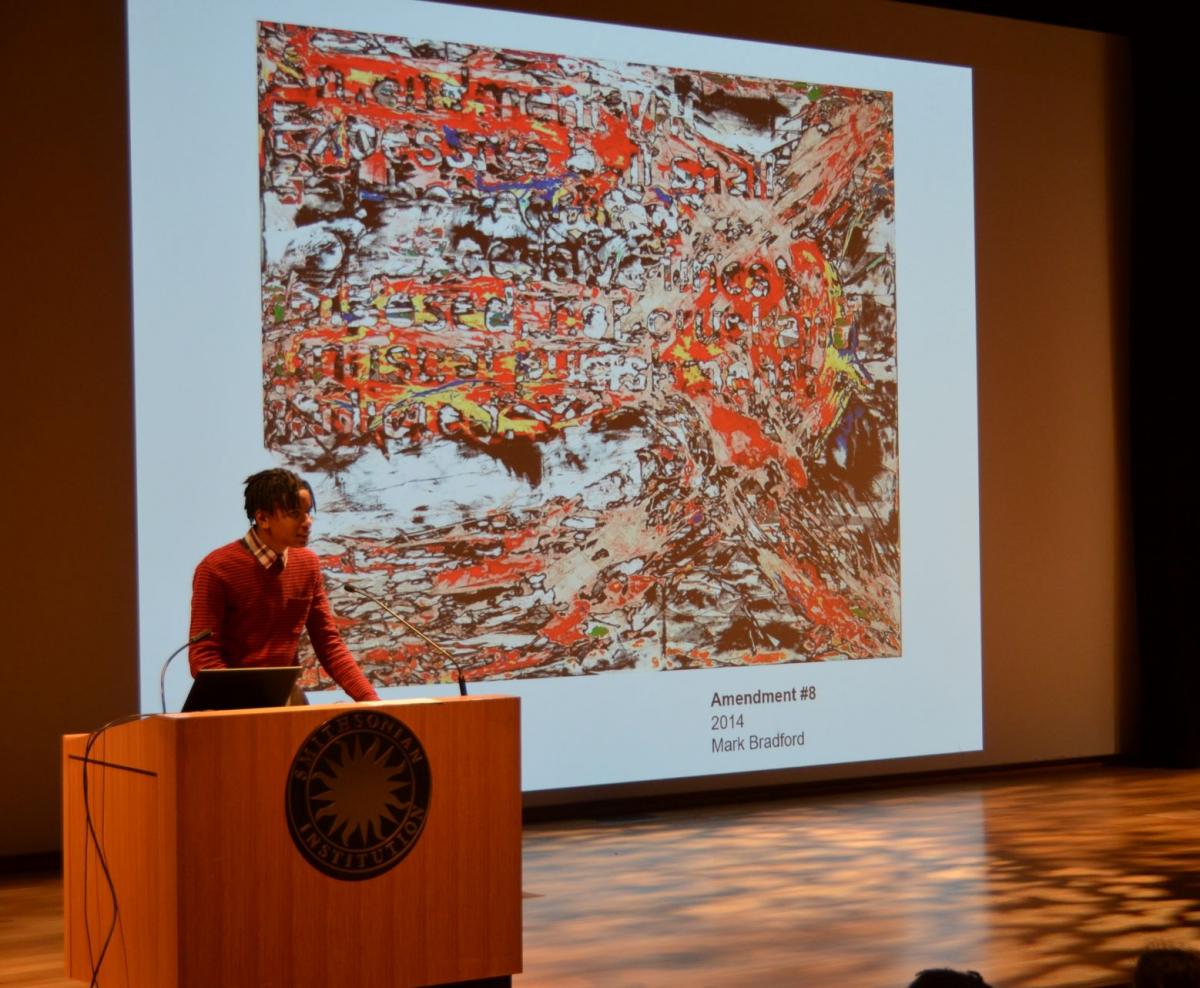
SAAM's Education Department works closely with nearly 600 8th grade students from DC public schools. We visit their classrooms and (thanks to a fleet of dedicated docents) they visit our galleries. Each student then writes a creative response to an artwork of their choosing from SAAM's permanent collection. These individual creative acts give us a view into the hearts and minds, worries and dreams of this population of future voters, community leaders, parents, and entrepreneurs. We've chosen two to share on our blog, beginning with Myles Bell—who shared his work at SAAM—writing about Mark Bradford's Amendment #8.
A Q&A with Myles Bell
How did the painting Amendment #8 by Mark Bradford inspire you?
I felt like my emotions, that others share, were being put on canvas for the world to see, and that made me appreciative.
What is your writing process?
I learned about the unjust treatment of black people at the age of eight-years-old while on a family vacation. Parts of George Zimmerman’s trial played in our hotel. He killed Trayvon Martin, a 17-year-old black teen walking in his neighborhood, and walked free. Since that story six years ago, there have been countless stories like his. The stories of Tamir Rice, Eric Garner, Sandra Bland, Stephon Clark and so many others. The thought process for my poem wasn’t even really a process. I’ve learned about police brutality, the devaluing of black life and what it means to me as a black person in America. I just let my thoughts that have built up flow into the paper.
What value did you see in engaging with artwork in both English and US History?
I felt that looking at artwork in both English and history allowed us to see the art from various angles. In English, we dissected the piece into what might have been the feelings of the subjects in the piece; and what did the artist want to convey to people. We then learned how we could interpret this piece into words and to relate to the artist, as well as the painting. In history, we looked at how the painting made us feel and what we could deduce from simply looking at it. Then we explored the historical context to see the history of the painting and what led up to it. From what we learned in both classes we were able to see the full scope of how artistry works.
What are your thoughts about giving voice to the poem in the museum's auditorium?
Delivering my speech on the stage was, in one word, empowering. It was my chance to show how I felt and just let my emotions flow freely. No one was lecturing me or giving me instructions. It was just plain, raw, speaking from the heart. It allowed my poem to come alive and, hopefully, give others the same affect the painting had on me.
Death of a Child, a poem by Myles Bell
Does this country care about our lives?
As the racial divide intensifies this country has become desensitized
to the black and brown lives lost
So, does this country care about our lives?
1, 2, 3, 4, he was dead before he hit the floor,
and his mother saw him fall from his backdoor.
And as she ran to her child, over bloodstained concrete,
they pushed her down, too, her cries obsolete.
5,6,7,8, his murderer was, somehow, up for debate.
They called him a deviant, a thug, a criminal.
Hiding another message, one more subliminal.
His death was his fault, and his brown skin is why he died.
9, 10, 11, boom.
He was 11 years old when he met his doom.
And on that concrete, his life defiled,
a part of this country died this day, died with the death of a child.
—Myles Bell
Learn more about our Education Department's rich offering of programs for visitors of all ages.






















